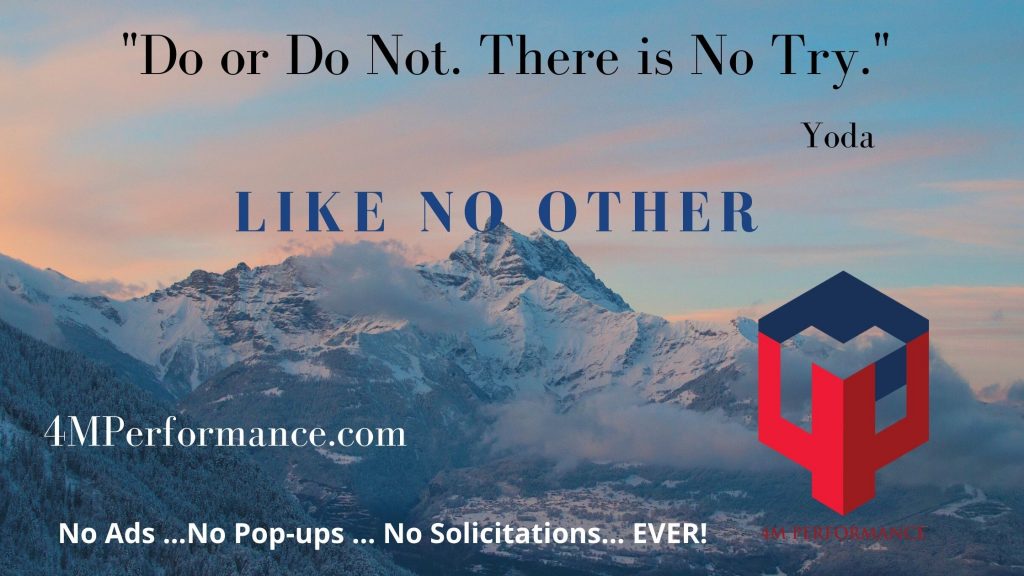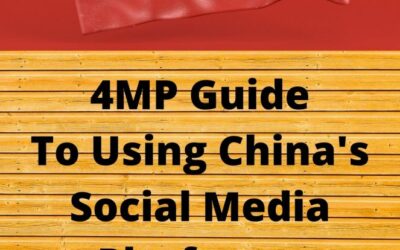Today’s digital marketing is complex, confusing and definitely overwhelming to the average small business owner. Where do you start? What network(s) should you be on? Should you do paid advertising? How often should you blog? Do you even need a blog? How does this help you get on the first page of Google?
You can’t just put up a website and start advertising on Facebook and hope to succeed. No, it takes planning and research.
First and Foremost: Clearly Define Your Target Audience and Think Like Them
One of the stumbling blocks that many small businesses face when delving into social marketing is that you’re too attached to your business. You know your product, service or industry inside and out. You feel it’s the best and greatest. You think your website is gorgeous, your social media pages are cool and your marketing materials are perfect. And that’s the problem -– to your target market it may not be.
Step back and take an Objective Look at You and Your Business
I really learned to do this when I was unemployed. One of the hardest things to do is to market yourself — even as a marketing professional — because to you, you’re too attached to yourself! You need to look at everything objectively. Step back and look at it all through the eyes of your target market.
Ask Yourself these Questions:
- Is it pleasing to the eye? Just because you like the colors doesn’t mean that everyone else does. Is it too busy? Is it too wild or loud? Is it too plain?
- Do all pictures and graphics convey the brand nicely? Are they cropped right? Are they the right size and not fuzzy? You only have one chance to make a first impression.
- When someone lands on the page – whether it’s your website, social network page or blog – do they know what it’s about, what you do, and how you can help them? Are the “about” sections complete?
- Is your call-to-action visible or do people have to scroll down to see it? What do you want a person to do when they get to your site? Is it confusing? It may seem simple to you, but then you’re the expert, your target is not.
- Is it easy to navigate? The last thing you want is someone getting lost in your site and giving up when they can’t find what they need.
Think Like the Searcher
- What are their pain points?
- What will they enter in the Google search box to get to your information? Most importantly, what will they find when they click through to your site?
- Are you providing the information they’re looking for?
- Do your posts, headings and taglines pique their curiosity?
It’s not all about You!
It’s about what you can do for your potential customer!
It’s about being helpful. It’s about getting that “happy camper” customer what they were looking for!
What are they going to find at their “Zero Moment of Truth?”
Zero moment of truth is that instant when you grab your laptop, mobile phone, or some other weird device and start learning about a product or service you’re thinking about trying or buying.
(“Youtility: Why Smart Marketing Is about Help Not Hype” by Jay Baer– I highly recommend it!)
That’s what Inbound Marketing is — being found when your target market is looking for what you have to offer.
Next Comes Research
1 – Keyword Research
You have to put yourself in your target market’s shoes and determine which keywords, questions or phrases they are going to enter into the search box to find you. You should have completed the Define Your Target Market Workbook and the next step is to do some market research to get to know your target.
Google’s Keyword Planner is free, but you have to sign up for Google Ads (pay per click [PPC]) to use it. A Gmail account will get you started. If you already have a Gmail account, click on “sign in” in the upper right hand corner and it will walk you through setting up an account.
Continuing with Google, click on “Discover New Keywords”. Enter your up to 10 keywords or phrases separated by commas. You don’t need to enter the landing page unless you want to filter your search results. If you’re local, add your city or state in location.
Then click “Get Started”. This will give you ideas on other relevant keywords or phrases in a variety of combinations. You don’t really know what a searcher is going to enter into the search box, so you should consider these.
You want to find the keywords or phrases with high monthly searches and low to medium competition. That means that there are a lot of folks searching for that term but fewer sites have those words in their pages or have paid ads. Take note of those. They’ll give you blogging ideas. Now, obviously, some major keywords with high competition, depending on your industry, you’ll have to use on your site. But when you write blog posts, look for those with high searches and low or medium competition.
Depending on your geographic area, the monthly search results you get will vary. Nationally, look for relevant keywords with over 800-1000 monthly searches. On local searches, you’ll get lower monthly searches so anything over 100 will be good.
Download your results list to an Excel spreadsheet so you can easily sort them and remove any that are not applicable.
Example:
There was a lady in one of my classes who was opening an online eCommerce clothing store for plus-size women. All the common phrases and keywords that came up had high searches but also high competition. Then we came across “curvy girls” with high searches (over 5000/m nationally) and low competition. I said to her, “That’s the name for your blog!” Putting that phrase at the top of her blog, as well as using in 2 or 3 times within her pages, will just about assure her that her site will come up when women are searching that phrase.
2 – Economic Outlook
For every major industry, you’ll find economic outlook reports. Google “[industry name] economic outlook 2020” and see what comes up.
Keep in mind that most of the world’s economy changed in 2020! Make sure that the data you’re looking at is current. Data from 2019 is of no good to you.
Look at related industries. For instance in working with a local scuba dive shop, I looked into the leisure travel industry. I discovered that millennials are the ones that will be traveling a lot and they like adventure travel and they’re into conservation. That information helped me put a social media strategy targeting millennials.
The economy can factor in your business success. You need to be aware of industry trends -– whether up or down. All this will affect your marketing.
Check out your competition
How often are they blogging? Where do they come up in Google search compared to you? How many followers do they have in the social networks? What are they posting on the networks? How often are they posting? On Facebook and Twitter there are ways to keep tabs on your competition without them knowing.
Your challenge: What will it take to bump the bottom 2 off the first page of Google so you’ll come up? This becomes your content and social media strategies. What are they NOT doing? If they’re not blogging, they you have to blog daily for the first week, then 2-3 times a day to bump them off. If they’re not active on social media, then you have to be.
3 – Finding Data on Your Target
Once you’ve clearly defined your target market (and you can have more than one target), you then need to get to know them as much as possible. My two favorite sources to get data are eMarketer.com and Marketing Sherpa.
eMarketer has a lot of statistical data on many subjects. Click on “Articles” and search for your target – like “baby boomers” or “millennials”. You’ll get a lot of free articles and some premium ones that you can subscribe to access. I’ve always been able to find enough data from their free articles. You can also search for “social media”, any of the specific networks, “mobile”, as well as specific industries.
Marketing Sherpa has marketing case studies. Search for your industry as well as target market keywords.
Research is important because if you just go out and start posting and blogging, you may be missing key factors that will make your marketing more effective. I once worked with a scuba dive shop. Knowing that millennials are passionate about conservation, my client’s strategy was to include conservation blog posts as well as posting and tweeting about it.
The whole idea is to put yourself in your target market’s shoes. Think like them. To be able to do that you need to get to know them. What solutions are you going to provide for their pain points – their problems? Or wants and desires.
Which social networks are they using the most? You don’t have to be on all the networks! Focus on the ones where your target market frequents the most.
Then go to sites like Social Media Today or Social Media Examiner to get ideas and strategies to best reach your target on social media. Learn about each network. Check out Content Marketing Institute and CopyBlogger for guidance on what to blog about to reach your target.
Whether you’re B2B or B2C, failing to do proper market research will hurt you in the long run.
You’re going to waste your time, effort and money going for the wrong target in the wrong way. The last thing you want to do is look stupid or insult people because you weren’t prepared.
Other sources:
- Your public library
- Chambers of Commerce
- Census data
- Civic organizations
- Government websites
- Trade associations
4 – Applying the Research to Your Strategy
Once you feel you’ve got a grip on your target(s), then you need to put together the strategic marketing plan.
Start with your goals and objectives. These are for your business in particular. How much money do you want to make in a year? Divide that by 12 and you’ll have your monthly monetary goal. Now, how many new clients do you need each month to reach that number? How many products do you need to sell to meet that goal? Write those down in your plan.
Growing your following in each of the networks should be part of your SMART Goals. The following goals, if starting from scratch, for the first 30 days, are usually:
- 100 Twitter followers
- 100 Facebook likes
- 50 connections on LinkedIn
- 25 Pinterest followers
- 25 Subscribers on YouTube
Next you have your overall strategy. What you’ve garnered by your research should have given you an idea of what you need to do.
Put down your ideas in each section: content marketing, each of the networks, keywords and hashtags, etc.
Keep in mind that this plan is NOT written in stone. In fact, it will change from month to month based on your analytics. You need to review your analytics from your website and social media every month to see what’s working and not working. Your following should be consistently growing. If it is, then you’re doing OK. Keep up the good work! If not, then look to see what your didn’t do or what you didn’t do enough. Did you post the wrong type of content?
What is SEO?
Simply put, SEO — search engine optimization — is optimizing your website so it comes up in first page of the search engines for specific keywords or phrases related to your business and what you have to offer.
Google owns search with over 80% of all global searches. Google pulls up the freshest content that most closely matches the search term.
That’s why you need to put yourself in your target market’s shoes! What are they going to enter in to the search box to find you? What’s going to come up?
That’s where content marketing comes in…
One thing that hasn’t changed much in the last few years in content marketing is that Content is still King — and it still works! If you want to…
- drive more potential clients to your website, you need to create content.
- grow your following on social media, you have to share both your and other people’s relevant content.
- increase conversions (sales), you need to write the right content.
Good, quality content is the main building block of today’s successful, digital marketing strategies. Whether it’s written, visual (video and graphics) or podcasts — if you don’t create content, you might as well close up shop.
- Yes, it’s time consuming.
- Yes, it takes planning.
- Yes, it takes some creativity.
B2B vs B2C Which Social Network Should You Use?
Since each social media network has a different audience, you need to consider the type of company you are to better reach you target market.
Is your company more Business to Business (B2B) or Business to Consumer (B2C)?
Sometimes it can overlap. Simply put, if you sell more to businesses rather than directly to the end consumer, then you’re B2B. If you’re target is the average consumer, then B2C.
Here’s how the social networks breakdown when comes to B2B vs B2C:

- B2B / B2C
- Facebook: 40/60
- LinkedIn: 80/20
- Pinterest: 10/90
- YouTube: 50/50
- Twitter: 50/50
- Instagram: 10/90
- Snapchat: 0/100
To judge which social network is best for you, for 1 month, post and share content equally in all of them — including doing a video on YT once a week. Then at the end of the month, look at your website’s analytics to see which ones brought in the most traffic. You then need to adjust your strategic and tactical plans accordingly.
If your target markets are both B2B & B2C, you need to decide what your breakdown is based on which brings in the majority of your income. Furthermore, focus on the networks where you’re getting the most engagement, where the insights and demographics reflect your target market(s) and where you’re building valuable relationships. Remember, some B2B connections may be excellent referral sources. It really helps to have a good comprehensive strategic plan based on industry and market research.
We at 4M Performance are here to help your business survive and thrive in these trying times.
4M Performance takes the fear out of the future…

We provide our members reliable insights that you can instantly implement for your business success. These include how-to’s, tips, and takeaways based upon the 4Ms of business acceleration: Management, Marketing, Money, Momentum. It’s the information you need to help boost your business to the next level.
Please let us know what other types of articles or resources will assist you in your business. We want you to survive and thrive through these uncertain times. We’re here for you!









0 Comments